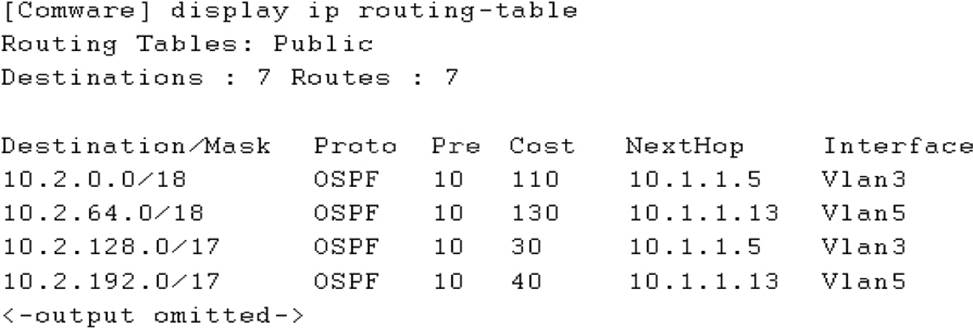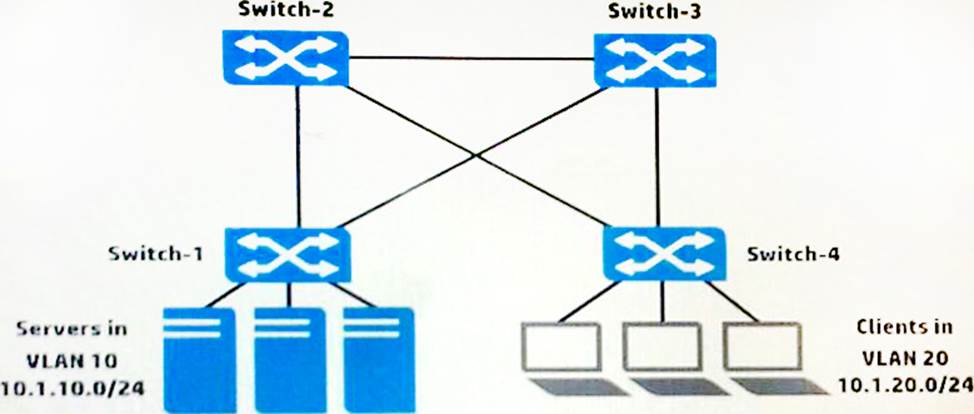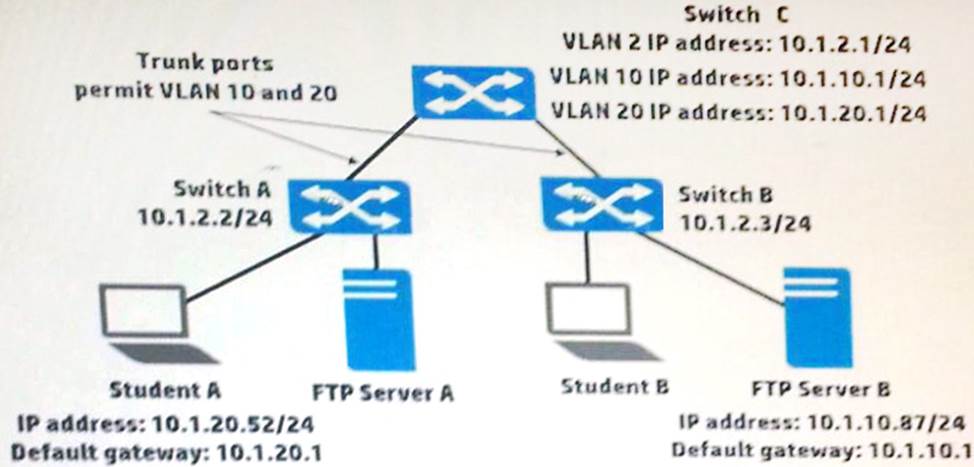HP HP0-Y52 Applying HP FlexNetwork Fundamentals Online Training
HP HP0-Y52 Online Training
The questions for HP0-Y52 were last updated at Apr 24,2025.
- Exam Code: HP0-Y52
- Exam Name: Applying HP FlexNetwork Fundamentals
- Certification Provider: HP
- Latest update: Apr 24,2025
A customer wants to implement multiple links between a server and a single HP Comware switch in order to increase the amount of bandwidth for more throughput.
Which feature should the network administrator implement to accomplish this?
- A . MSTP
- B . IRF
- C . link aggregation
- D . MIMO
0.2.0 0.0.0.255).
A network administrator configures this command on an HP ProVision switch:
vlan 30 ip helper-address 10.0.3.253
The switch is able to ping 10.0.3.253. After the administrator configures the command, users in VLAN 30 report that their PCs fall to acquire addresses using DHCP.
What should the administrator ensure?
- A . that the switch is configured with a dynamic IP routing protocol
- B . that the switch has DHCP relay functions enabled
- C . that the switch has DHCP server functions enabled
- D . that the switch has an IP address on VLAN 30
What is one difference between Network Segment-based discovery and ARP-based discovery on HP Intelligent Management Center (IMC)?
- A . With Network Segment-based discovery, IMC can discover multiple devices. With ARP-based discovery, IMC can only discover one device; the administrator must re-run ARP-based discovery to discover a second device.
- B . With Network Segment-based discovery, network device login settings must match login settings on IMC. With ARP-based discovery, only ARP settings must match.
- C . With Network Segment-based discovery, network device SNMP settings must match SNMP settings on IMC. With ARP-based discovery, only ARP settings must match.
- D . With Network Segment-based discovery, the administrator enters a range of IP addresses to discover. With ARP-based discovery, the administrator enters one seed IP address, and IMC dynamically learns more IP addresses to discover.
Refer to the exhibit.

The exhibit shows partial output of the HP Comware display ip routing-table command. Note the Pre or preference column.
On an HP ProVision switch, what is the corresponding term used for the Pre column in the Comware output shown in the exhibit?
- A . protocol ranking
- B . administrative distance
- C . cost
- D . metric
A server connects to a port on an HP Comware switch.
The network administrator wants to ensure that:
– the port remains forwarding during Multiple Spanning Tree Protocol (MSTP) topology changes, and
– changes in the port status do not cause MSTP topology changes.
Which statement describes how the administrator can accomplish this?
- A . The administrator must manually configure the port as an STP edge port.
- B . The administrator can lower the port’s root path cost to zero.
- C . The administrator can accept the default behavior of auto-edge.
- D . The administrator can configure the port as an MSTP master port.
Refer to the exhibit.

The network administrator has configured this port to permit all VLANs. The output in the exhibit indicates that the port is only passing VLANs 1 and 11. The administrator wants the port to pass VLAN 12 as well.
What should the administrator do to accomplish this?
- A . Enable IP routing.
- B . Add VLAN 12 to the switch.
- C . Change the port link-type to hybrid.
- D . Change the port link-type to access.
Refer to the exhibits.
Exhibit 1

Exhibit 2

All of the switches in Exhibit 1 are routing switches. Exhibit 2 shows the routes configured on these switches. The direct (connected) routes are not shown, but assume that links are configured with the IP addresses shown in Exhibit 1.
The network administrator wants to protect communications between clients and servers in case Link 1 fails.
What should the administrator do to protect these communications in this failover situation?
- A . Add a redundant route to 10.1.10.0/24 on Switch-4 and a redundant route to 10.1.20.0/24 on Switch-1.
- B . Add a redundant route to 10.1.20.0/24 on Switch-1 and a redundant route to 10.1.20.0/24 on Switch-2.
- C . Add a redundant route to 10.1.10.0/24 on Switch-1 and a redundant route to 10.1.20.0/24 on Switch-4.
- D . Add a redundant route to 10.1.20.0/24 on Switch-1 and a redundant route to 10.1.10.0/24 on Switch-2.
Refer to the exhibit.

The switches in the exhibit are all HP Comware switches that run Multiple Spanning Tree Protocol (MSTP).
The network administrator wants to ensure that each switch-to-switch link is in its own subnet. The administrator also wants to make sure that all of the links are available for routing during normal operation.
How should the administrator configure the physical switch-to-switch interfaces to accomplish these goals?
- A . Configure them as trunk ports that permit VLANs 10 and 20.
- B . Configure them as any type of port, and make sure spanning tree is enabled on them.
- C . Configure them as route-mode ports.
- D . Configure them as hybrid ports that carry VLAN 10 and 20 as untagged.
Refer to the exhibit.

Assume that Student A’s ARP table is empty. Student A is preparing to send an FTP packet to FTP Server B and needs to discover the proper destination MAC address.
For which IP address does Student A send an ARP request?
- A . 10.1.10.1
- B . 10.1.10.87
- C . 10.1.2.2
- D . 10.1.20.1
Latest HP0-Y52 Dumps Valid Version with 116 Q&As
Latest And Valid Q&A | Instant Download | Once Fail, Full Refund

